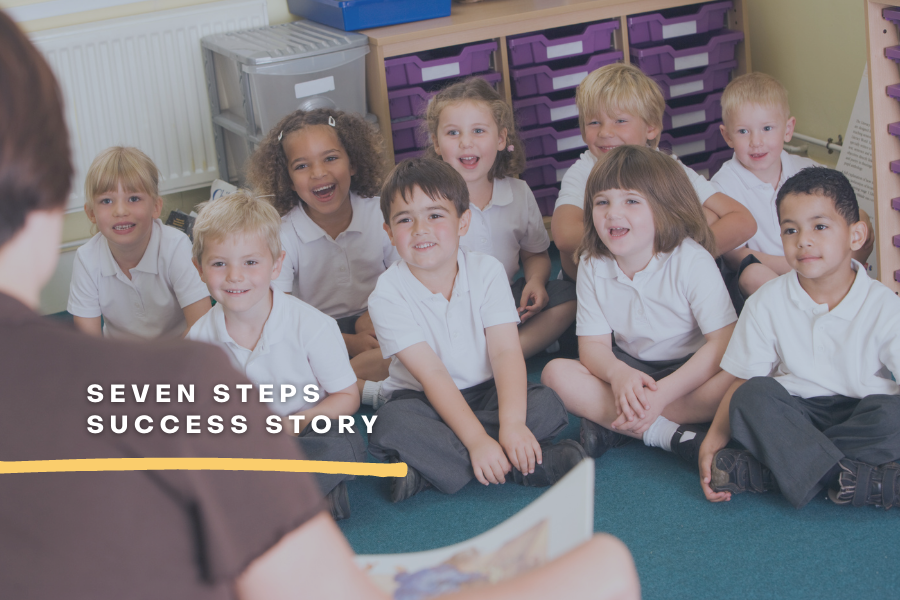No products in the cart.

4 min

Education

Admin SEVEN STEPS
Teachers work better when teachers work together, when they collaborate.
Collaboration inspires teachers.
Inspired teachers engage students.
Engaged students learn.
We chatted to Cherie Forbes from Prescott College Southern about how she and her fellow teachers were implementing the Seven Steps and how they achieved a new level of engagement.

Create school-wide momentum
We often get asked by school leaders, ‘How do we make real change to writing results at our school? How do we maintain long-term momentum with the Seven Steps?’
‘Maintaining long-term change is not easy’ is our first honest answer, but you can do it – so many Seven Steps schools have!
Schools who bring about real long-lasting and successful change seem to share some key characteristics:
- a leader or teacher who oversees ‘driving’ writing improvement
- school-wide passion for transforming students,
- teachers trained together who can support each other, both in the classroom and out.

Prescott College Southern is a perfect example of that last point in particular. After being recommended the Seven Steps from secondary teachers in their school, eight of their primary teachers attended a Workshop One: Seven Steps to Transform Writing together.
After their training, the teachers have banded together to create a wave of excitement and revitalised their school’s writing classes. The result?

“It was great because we all got to learn the theory together, we got enthusiastic about it together and we rolled it out together. It has changed me as a teacher. It’s changed how I approach writing, I absolutely love the Seven Steps!”
– Cherie Forbes, Year 4 Teacher

The Seven Steps has now become the main pedagogy behind the school’s writing program. By training together, they have built momentum in their whole school and created a spirit of collaboration amongst teachers – in lesson planning, sharing ideas and student work and improving feedback.
Cherie and her fellow teachers are excited by the enthusiasm their students are expressing for writing and the level of engagement it has produced. “It takes a bit of time in planning each week, but the results are truly rewarding. The most positive thing that I’ve come across is that kids want to share their work and the non-writers want to write!”
Cherie and a fellow colleague “sit together for an hour or two on a Monday night to review the past week and plan what to do for the next” and the students are reaping the rewards. Collaborating with fellow teachers has had numerous benefits for Cherie and the school which include:
- the sharing of ideas
- planning has become more enjoyable
- it’s keeping teachers excited
- classes are better
- they’ve gained a different perspective
- doubling or tripling the brainpower in planning and reviewing lessons (what worked, what didn’t)!
Working in a group has the same benefits as it does for your students. When done correctly, it can ease the burden of classroom planning and create a tight-knit group of passionate teachers working together and loving what they do.
If you love spending quality time with your teacher BFF and want to give your students the best opportunity to improve, collaborate. Bring your personality, joy and fun into the classroom and into your planning.
When it comes to the Seven Steps, the two best options to create a collaborative environment:
- hold a Workshop One: Seven Steps to Transform Writing at your school – one of our experienced presenters will come to your school and train your whole staff, or
- send a group of passionate teachers to a Workshop One at one of our locations nationwide (like Prescott College Southern).







